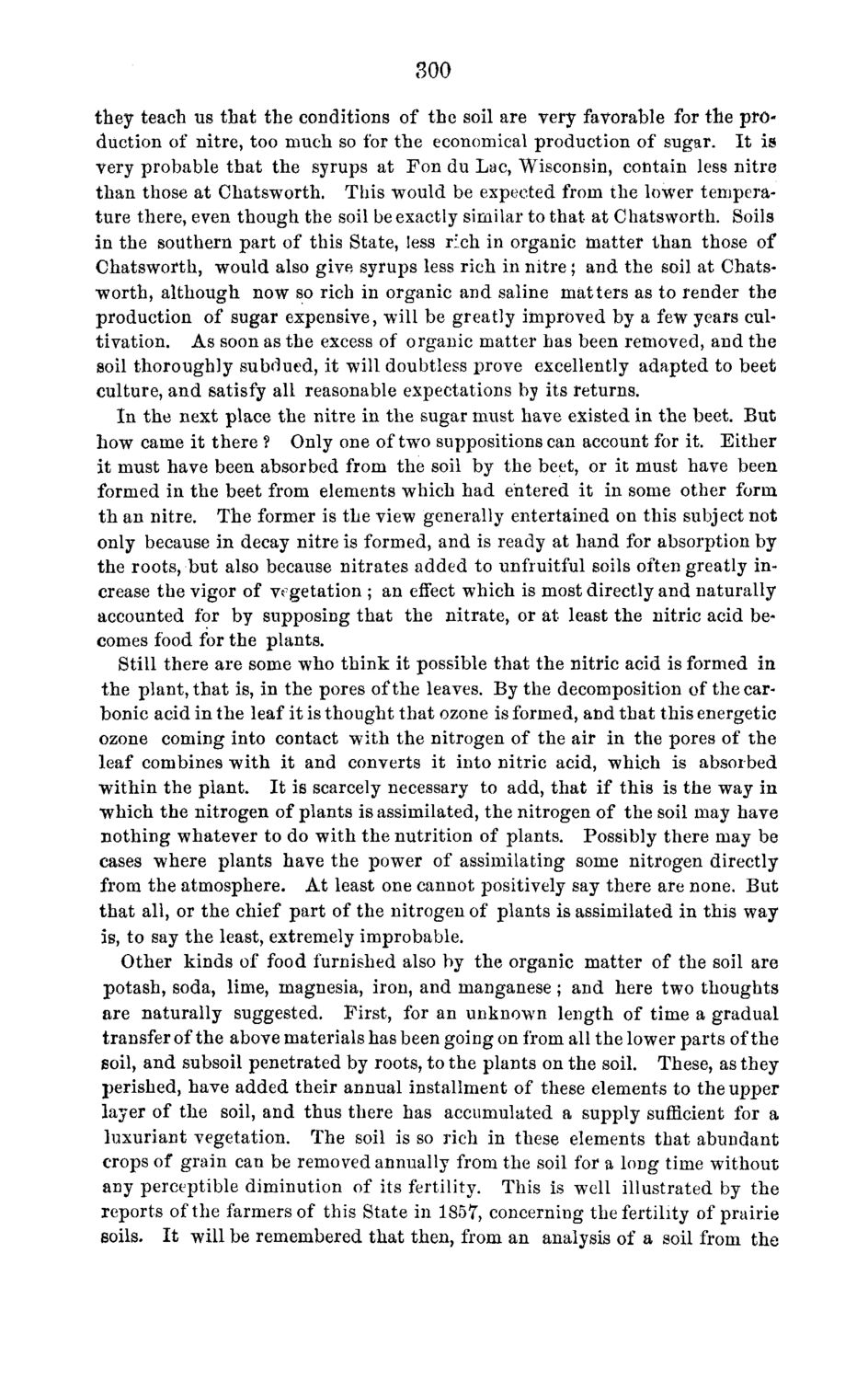| |
| |
Caption: Board of Trustees Minutes - 1870
This is a reduced-resolution page image for fast online browsing.

EXTRACTED TEXT FROM PAGE:
300 they teach us that the conditions of the soil are very favorable for the production of nitre, too much so for t h e economical production of sugar. I t is very probable that the syrups at Fon du Lac, Wisconsin, contain less nitre than those at Chatsworth. This would be expected from the lower temperature there, even though the soil be exactly similar to that at Chatsworth. Soils in the southern part of this State, less rich in organic matter than those of Chatsworth, would also give syrups less rich in n i t r e ; and the soil at Chatsworth, although now so rich in organic and saline matters as to render the production of sugar expensive, will be greatly improved by a few years cultivation. As soon as the excess of organic matter has been removed, and the soil thoroughly subdued, it will doubtless prove excellently adapted to beet culture, a n d satisfy all reasonable expectations by its returns. I n the next place the nitre in the sugar must have existed in the beet. But how came it there ? Only one of two suppositions can account for it. Either it must have been absorbed from the soil by the beet, or it must have been formed in the beet from elements which had entered it in some other form t h an nitre. The former is the view generally entertained on this subject not only because in decay nitre is formed, and is ready at hand for absorption by the roots, but also because nitrates added to unfruitful soils often greatly increase the vigor of vegetation ; an effect which is most directly and naturally accounted for by supposing that the nitrate, or at least the nitric acid becomes food for the plants. Still there are some who t h i n k it possible that the nitric acid is formed in the plant, that is, in the pores of the leaves. By the decomposition of the carbonic acid in the leaf it is thought that ozone is formed, and that this energetic ozone coming into contact with the nitrogen of the air in the pores of the leaf combines w i t h it and converts it into nitric acid, which is absorbed within the plant. It is scarcely necessary to add, that if this is the way in which the nitrogen of plants is assimilated, the nitrogen of the soil may have nothing whatever to do with the nutrition of plants. Possibly there may be cases where plants have the power of assimilating some nitrogen directly from the atmosphere. At least one cannot positively say there are none. But that all, or the chief part of the nitrogen of plants is assimilated in this way is, to say the least, extremely improbable. Other kinds of food furnished also by the organic matter of the soil are potash, soda, lime, magnesia, iron, and manganese; and here two thoughts are naturally suggested. First, for an unknown length of time a gradual transfer of the above materials has been going on from all the lower parts of the soil, and subsoil penetrated by roots, to the plants on the soil. These, as they perished, have added their annual installment of these elements to the upper layer of the soil, and thus there has accumulated a supply sufficient for a luxuriant vegetation. The soil is so rich in these elements that abundant crops of grain can be removed annually from the soil for a long time without any perceptible diminution of its fertility. This is well illustrated by the reports of the farmers of this State in 1857, concerning the fertility of prairie soils. I t will be remembered that then, from an analysis of a soil from the
| |